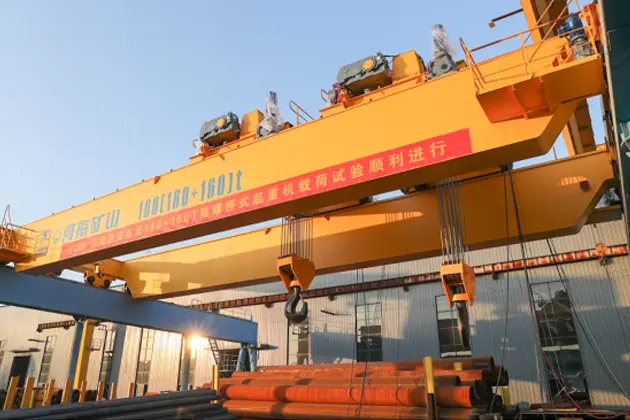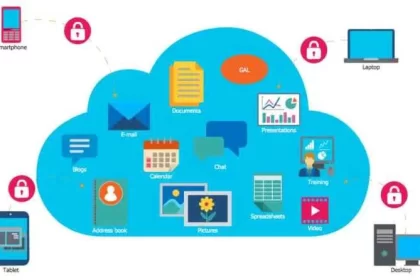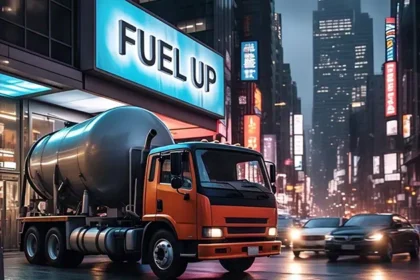In the mining industry, efficient material handling is crucial for maintaining the sector’s competitiveness. Overhead cranes are key equipment in the mining sector, providing precise and reliable handling of heavy loads. However, as the mining industry continues to evolve, it faces ongoing challenges and changing demands. Therefore, customizing overhead cranes to meet the unique needs of the mining industry has become essential.
Mining operations are often conducted in harsh environments, requiring the extraction of valuable resources from the earth. Overhead cranes play a vital role in mining operations, not only enhancing material handling efficiency but also facilitating the seamless processing of ores. The primary goals of customizing overhead cranes are to improve productivity and ensure safety. These two objectives are closely linked, as efficient material handling not only increases operational speed but also reduces risks for operators.
Design Customization to Address Harsh Environments
To adapt to the demanding mining environments, overhead crane designs need to be specially customized. Mining operations present a range of unique challenges that require cranes to be seamlessly tailored to meet them:
- Heavy Load Handling: Mining operations typically involve handling large quantities of heavy materials. Cranes must have sufficient capacity to lift and transport these heavy loads effectively. Therefore, customized designs include reinforcing the crane structure and using robust components to handle the weight of heavy materials.
- Overcoming Space Constraints: Mining operations often take place in confined spaces, which may include narrow areas, uneven terrain, and varying altitudes. Customized crane designs also include adapting to these spatial constraints, ensuring optimal maneuverability and functionality.
- Adaptability to Harsh Conditions: Equipment in mines is frequently exposed to abrasive particles, extreme temperatures, and corrosive substances. To maintain performance in such conditions, customized cranes employ special coatings, sealing systems, and corrosion-resistant materials. When the operational environment contains a certain concentration of flammable gases or dust, explosion-proof overhead cranes are required.
Customizing Crane Capacity to Meet Mining Needs
In mining operations, lifting requirements vary at different stages. From the initial extraction of raw materials to the complex processing of ores, each stage imposes distinct demands on the cranes. To meet these diverse needs, crane design and capacity must be customized accordingly:
- High Lifting Capacity Requirements: In the extraction phase, especially when handling bulk materials, cranes need to have high lifting capacities. Customized cranes are designed to handle heavy loads efficiently, ensuring smooth operation.
- Flexible Transport Capabilities: Mining operations involve transporting materials from one location to another or moving them between different processing stages. Customized designs ensure that crane lifting capacities are adapted to these transportation needs.
- Specialized Processing Requirements: During ore processing, crane tasks may require specific lifting capacities. Through customized design, cranes can meet these specialized requirements, enhancing processing efficiency.
Enhanced Structure and Flexibility
EOT cranes need to possess adequate durability and reliability when handling heavy loads. By reinforcing structural elements and employing advanced hoisting mechanisms, cranes can withstand high levels of stress and strain. Additionally, customized designs include flexible configurations and scalability to adapt to the changing demands of mining operations.
Functional Enhancements to Improve Productivity
In mining operations, overhead cranes must not only handle heavy loads but also have efficient functionalities to enhance productivity. Customized advanced features, such as automation systems and integrated safety measures, help streamline operations and reduce human error. These functional enhancements include:
- Automated Control Systems: Customized control systems can be tailored to the specific needs of mining operations, improving operational efficiency.
- Internet of Things (IoT) Integration: By utilizing IoT technology, overhead cranes can seamlessly connect with other equipment and systems within the mining infrastructure, optimizing operational processes.
- Energy Efficiency Optimization: Customized energy efficiency systems allow cranes to optimize power usage based on operational demands, achieving sustainability goals and reducing operating costs.
Customized Safety Measures
In the challenging environments of mining operations, the safety performance of overhead cranes is paramount. To ensure the safety of operators and the integrity of equipment, crane design and functionalities need to undergo rigorous safety customization, including:
- Collision Avoidance Systems and Real-Time Monitoring: Utilizing advanced collision avoidance technologies and real-time monitoring systems can prevent accidents and enhance operational safety.
- Emergency Response and Predictive Maintenance: Customized emergency response systems and predictive maintenance features help respond swiftly to emergencies, reducing the risk of accidents.
Conclusion
Customizing overhead cranes for the mining industry is a complex and strategic task that requires a high degree of flexibility and adaptability in design and functionality. By tailoring to the specific needs of the mining industry, customized overhead cranes not only enhance productivity and efficiency but also significantly improve operational safety and reliability. These customized solutions are essential for supporting and advancing the sustainable development of the mining industry.










